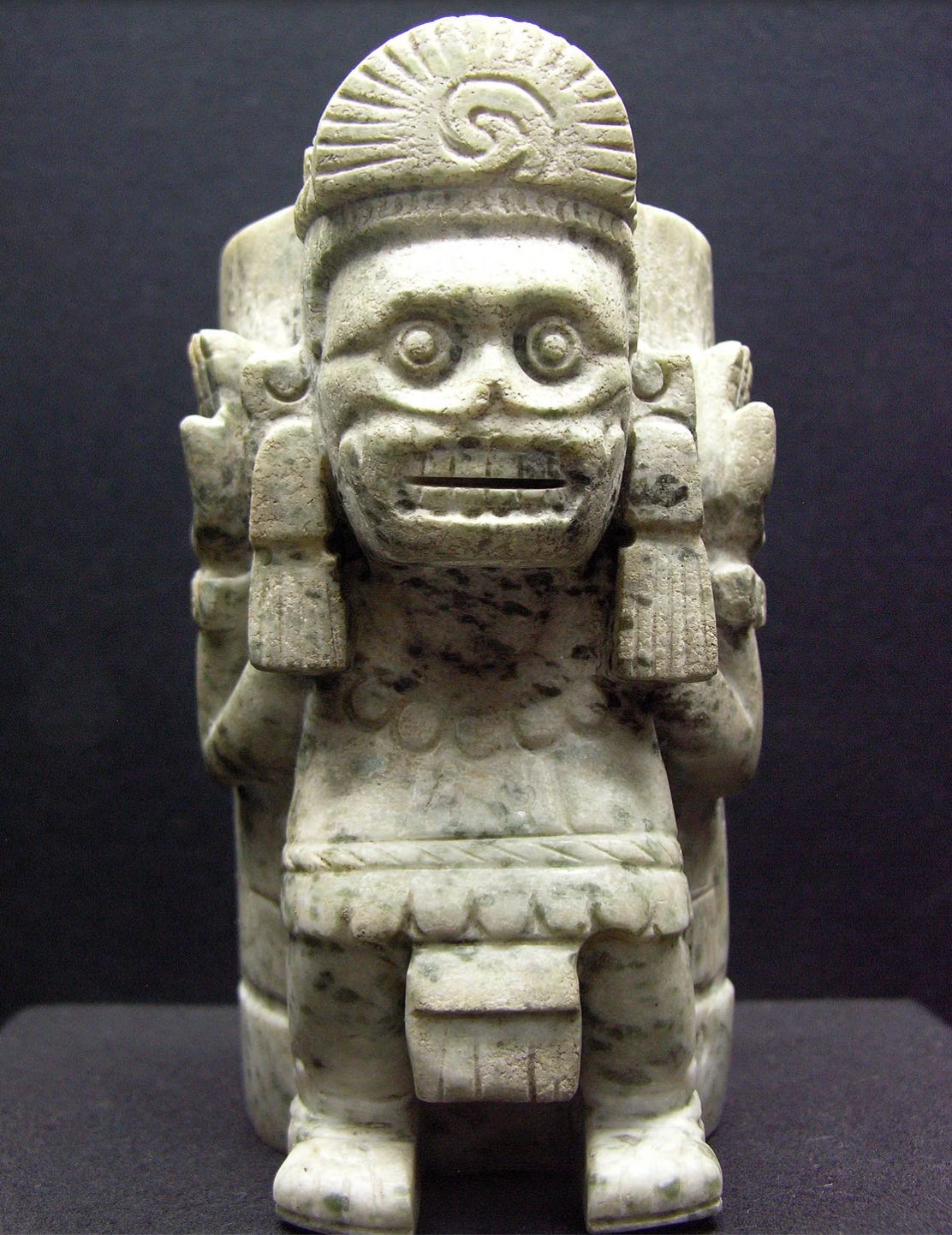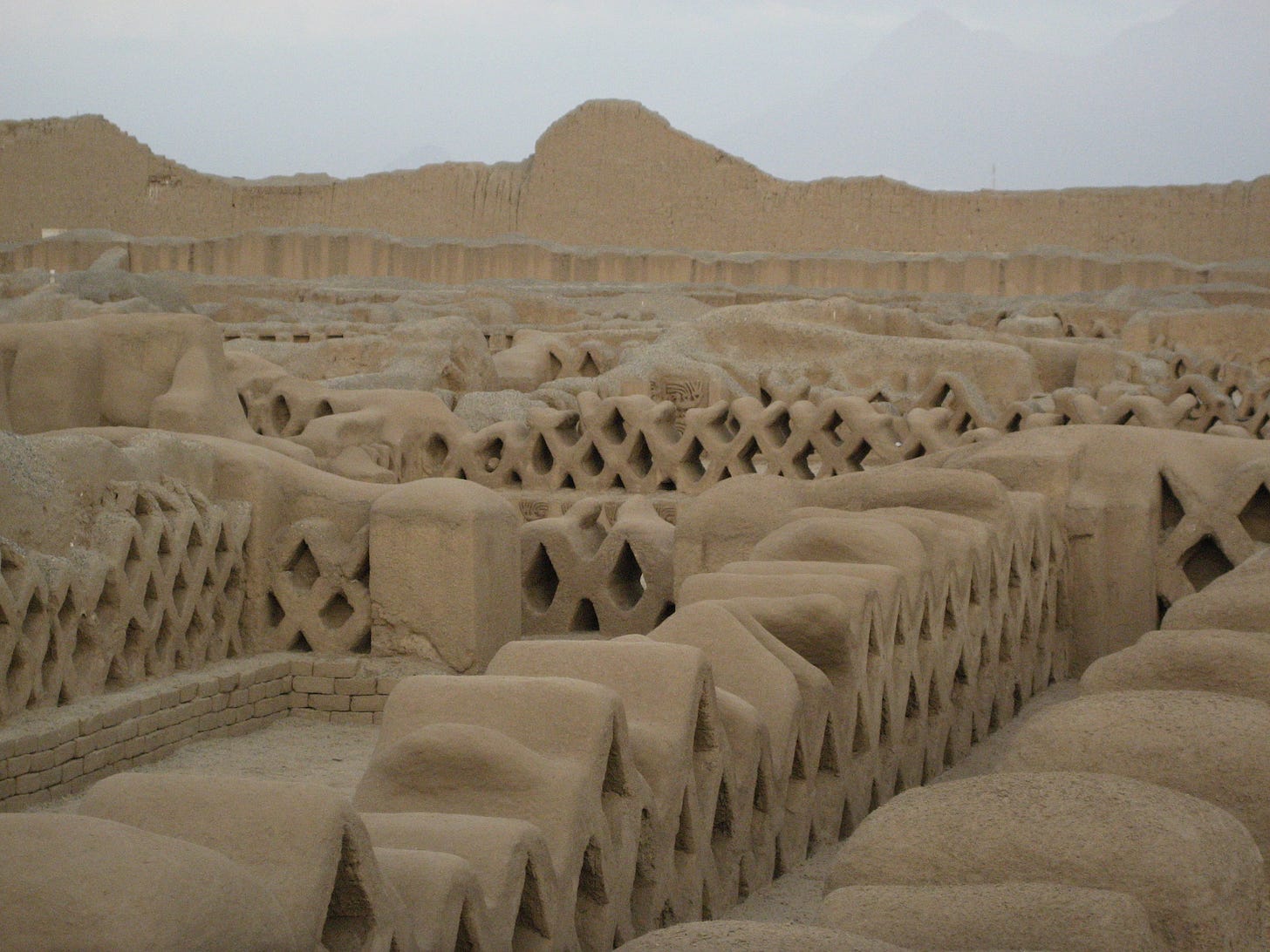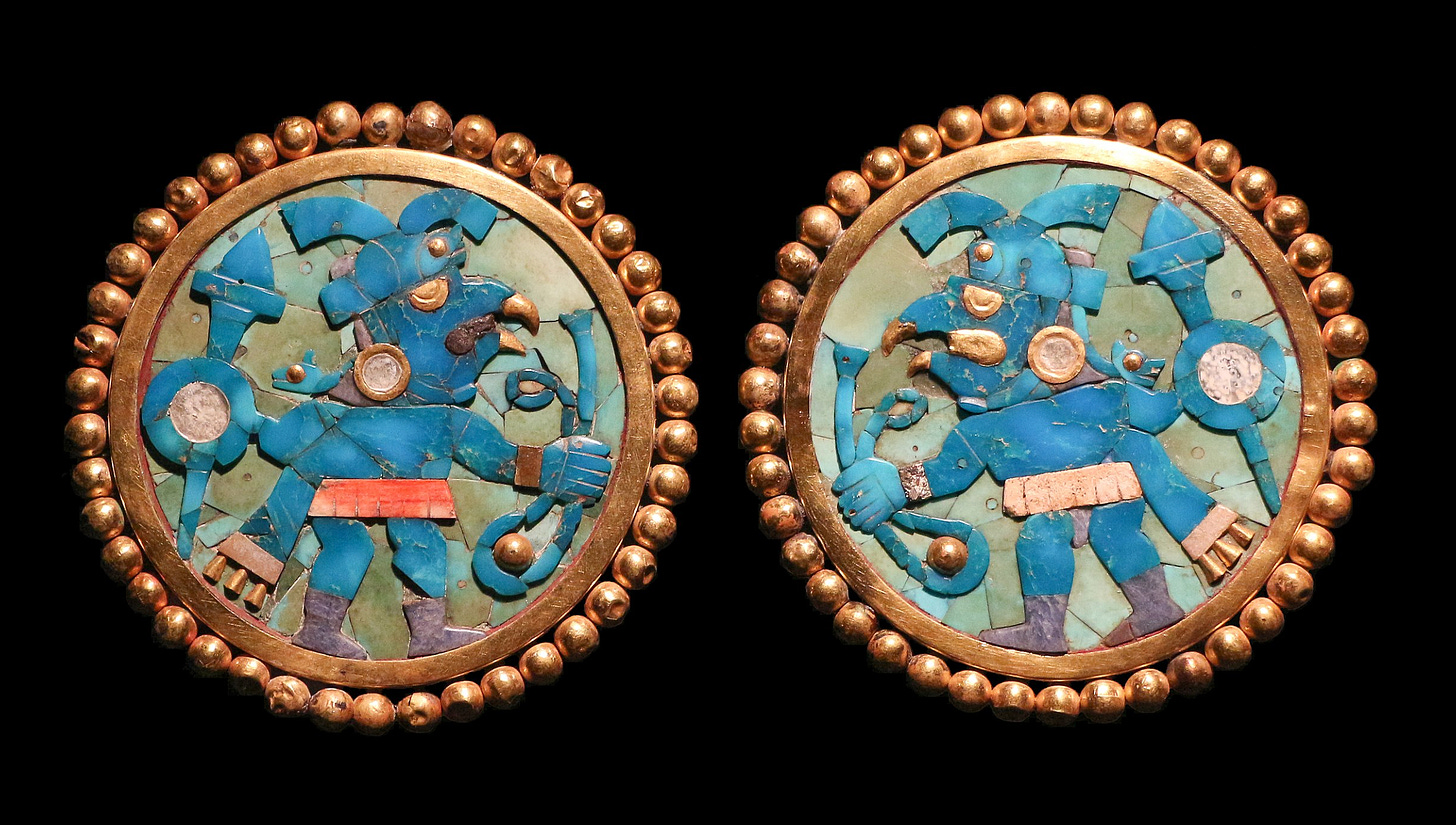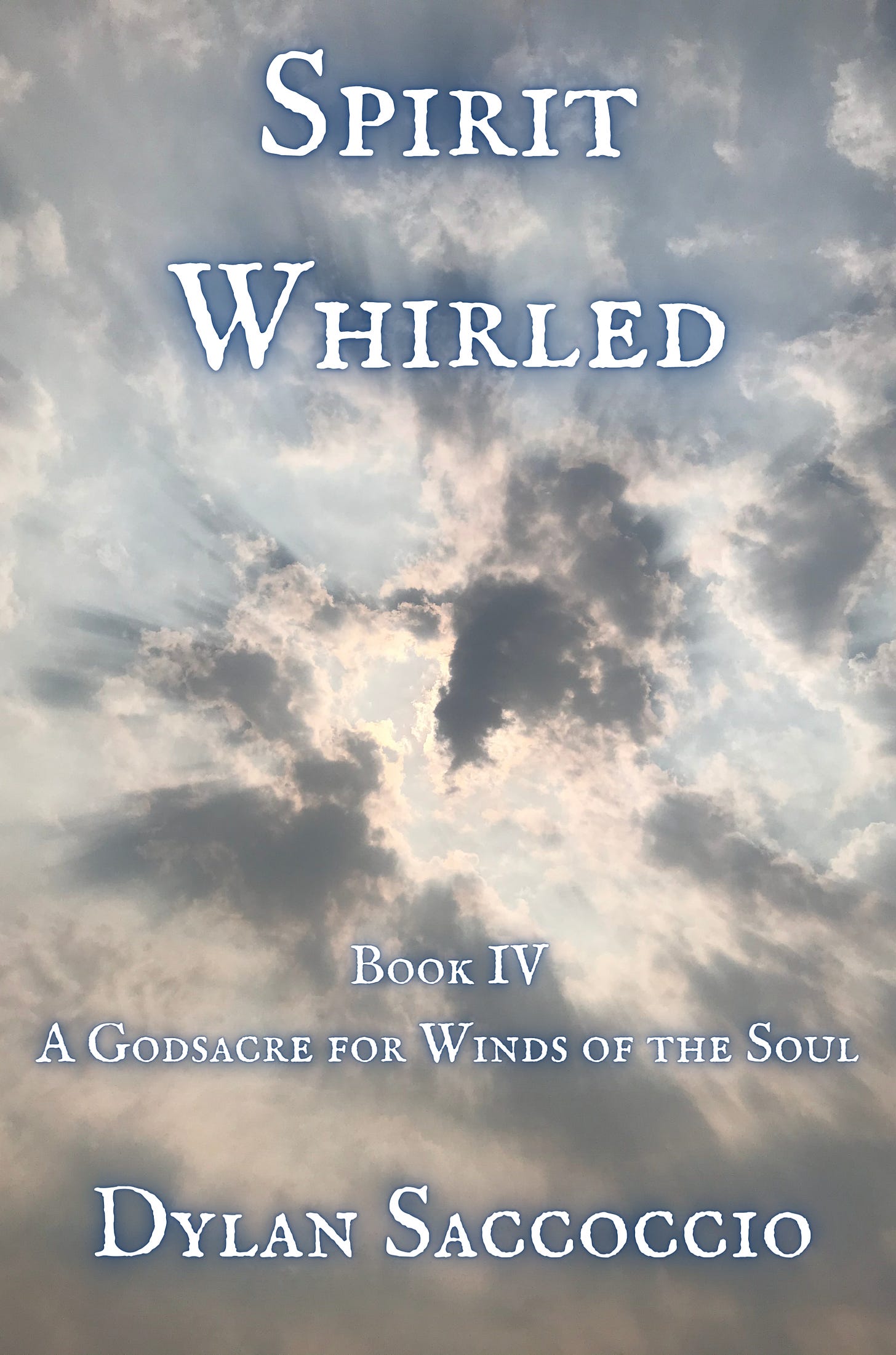Fresh Batch #76: Chan Chan Zone & The Moche Culture of Peru
Do They Indicate Cultural Diffusion with the Old World?
The name Chan Chan looks like some sort of Asian dialect. From Wiki, “The name is probably derived from the Quingnam "Jiang" or "Chang" which means Sun, from which Chan-Chan would be literally: Sun-Sun. It is hypothesized that its true meaning would be: Great sun, resplendent Sun, splendid sun or refulgent sun (since a typical feature of the Quingnam language is that the reduplication of a word acquires a new meaning). Another theory says that the name would derive from the term: Shian or Sian (is this connected to Siam or Zion?). The "Shi" voice translates as Moon and "An" as a house, meaning House of the Moon, making known that the Moon was the main deity.”
Again, “Chan Chan was the largest city of the pre-Columbian era in South America. It is now an archaeological site in La Libertad Region 5 kilometres (3.1 mi) west of Trujillo, Peru.
“Chan Chan is located in the mouth of the Moche Valley and was the capital of the historical empire of the Chimor from 900 to 1470, when they were defeated and incorporated into the Inca Empire. Chimor, a conquest state, developed from the Chimú culture which established itself along the Peruvian coast around 900 AD.
“Chan Chan is in a particularly arid section of the coastal desert of northern Peru. Due to the lack of rain in this area, the major source of nonsalted water for Chan Chan is in the form of rivers carrying surface runoff from the Andes. This runoff allows for control of land and water through irrigation systems.”
I want to draw your attention to the Moche Valley, which according to Wiki, “The pre-Columbian cultures Moche and Chimu emerged here. The Mochicas applied their knowledge of Hydraulic engineering and developed cultivation techniques in the valley and then on the arid coastline of northern Peru. Their culture flourished from 100 AD to 500 AD. The Chimu developed later, rising from 900 AD to 1370 AD, when they were conquered by the Inca.”

Moche is philologically identical to Moshe (Moses; mse; משה). According to Wiki, “The Moche civilization (Spanish pronunciation: [ˈmotʃe]; alternatively, the Mochica culture or the Early, Pre- or Proto-Chimú) flourished in northern Peru with its capital near present-day Moche, Trujillo, Peru from about 100 to 700 AD during the Regional Development Epoch. While this issue is the subject of some debate, many scholars contend that the Moche were not politically organized as a monolithic empire or state. Rather, they were likely a group of autonomous polities that shared a common culture, as seen in the rich iconography and monumental architecture that survives today.”
For those of you unfamiliar with Spirit Whirled, Moses and the concepts encoded in them are one of the keys to the universal system of priestcraft, so when I see it scattered about among the Americans, it’s almost certainly a sign of diffusion, whether that be of cultures or forgeries. I wrote in A Godsacre for Winds of the Soul (click the image), “Bacchus, Jesus, Moses, Myses, Muses, etc. are named after water because water gives life and water is named after life, and life is named after the sun. This is why the German bach is a stream, a current, or a rivulet. We see the root in Moses being mos, which can be mois or mis, giving way to moist or mist, both pertaining to water, which is also seen in Myses, muses, and even another name Misem, which is Bacchus.”
Mis, mos, mes, mic, moc, mec, etc. are all same given the interchangeability of C and S and the vowels. This sheds new life on words like Ol-Mec (see the Olmecs, which could be the Messiahs of the World) and Mic-tlantecutli.

We also see this root in Misteca, where sacred vestments, resembling those worn by the high priests of the Mosaic law, were discovered, as well as in Mecitli, which means a vest of hare skins, who was the god of the Mexicans, hence Mexico originally being called after its leader: Mesi (Mesico). This is the Hebrew word for messiah (msih; משיח).
Become a member to access the rest of the article.
Keep reading with a 7-day free trial
Subscribe to Ancient History, Mythology, & Epic Fantasy to keep reading this post and get 7 days of free access to the full post archives.






